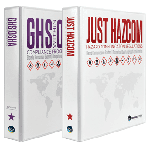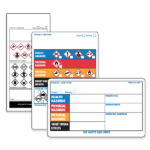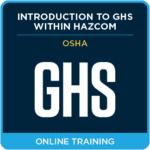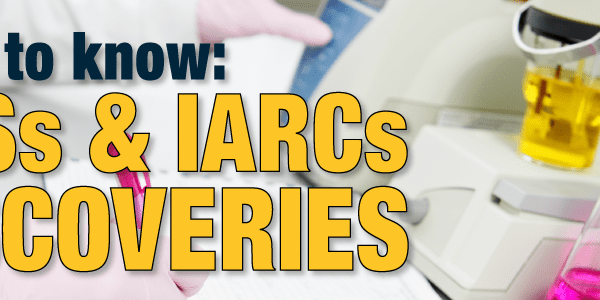
Choosing the Right Respiratory Protection
As we approach the end of 2024, OSHA has once again released its Top 10 Most Cited Standards, offering valuable insight into workplace safety trends. One of the most commendable aspects of OSHA’s transparency is how these annual reports bring attention to the areas that companies and workers must focus on to improve safety standards. While workplace incidents will inevitably occur, the positive takeaway from this year’s report is the encouraging downward trend in violations, reflecting ongoing efforts to create safer environments.
Although it’s promising to see these trends heading in the right direction, there is always room for improvement. Safety in the workplace should never be taken for granted, and this list serves as a critical reminder for businesses and individuals alike. Frequent issues include everything from fall protection, hazard communication, face, and eye protection, to respiratory protection. These citations highlight key areas where continuous improvement is necessary.
By publishing this list, OSHA keeps the spotlight on potential dangers that may otherwise go unnoticed in day-to-day operations. This helps prevent complacency and pushes companies to re-evaluate and enhance their safety protocols. For example, ensuring workers are properly trained on fall protection equipment or ensuring that hazard communication procedures are clear and accessible can make a significant difference in reducing workplace injuries.
In an upcoming article, we’ll dive deeper into How Chemicals Can Affect Your Safety Gear. Stay tuned for tips on how to better protect yourself and your team from these common hazards!
Respiratory protection plays a critical role in safeguarding workers against harmful airborne contaminants. However, one common issue in workplaces is the challenge of verifying the right type of respiratory protection for the specific hazards present. Different contaminants require different types of protection, and failing to match the correct respirator to the hazard can lead to dangerous consequences. This article will explore how to select the appropriate respiratory protection, along with tips on best practices, training, and ensuring that equipment is procured from reputable sources.
Understanding the Hazards: Dust vs. Gases and Vapors
When choosing respiratory protection, it’s essential to understand the specific hazards of the material you’re working with. The type of respiratory protection required depends heavily on the characteristics of the contaminant:
- Dust particles: The size of the particles (measured in microns) determines the level of filtration required. For example, respirators designed for nuisance dust might not protect against fine particulate dust from materials like silica, which is much smaller and more dangerous when inhaled. Safety Data Sheets (SDS) often provide details about the particle size, helping to guide the selection of the appropriate respirator.
- Gases and vapors: These substances pose different risks, including oxygen displacement, which can lead to asphyxiation, unconsciousness, or even fatalities. A common example is the presence of carbon monoxide or hydrogen sulfide in confined spaces, which requires the use of supplied-air respirators (SARs) rather than simple filtering facepieces.
An important aspect to consider when choosing respirators is whether the contaminant is dry or wet. Wet contaminants, such as mists or sprays, can clog filters more quickly than dry particles, requiring respirators designed to handle such conditions.
Consulting the Safety Data Sheet (SDS)
Always start by reviewing the SDS for any hazardous material being used. The SDS will typically provide information in Section 8 (Exposure Controls/Personal Protection) about the type of respiratory protection needed based on exposure limits and the properties of the material. For example, a chemical like Isocyanates, used in spray paints or foams, requires respirators with organic vapor cartridges, as well as protection against fine particles.
The SDS may also indicate the need for a particular level of protection based on particle size or exposure levels. For instance:
- “Use a NIOSH-approved respirator for particulates with a minimum N95 rating if exposure to dust particles of 5 microns or smaller is expected.”
Involving a Workplace Hygiene Specialist
Selecting the correct respiratory protection isn’t always straightforward. This is where a workplace hygiene specialist can assist. They can:
- Conduct air quality monitoring to determine the specific contaminants present and at what concentration.
- Perform fit testing to ensure that the respirator chosen provides a proper seal and is suitable for the worker’s face shape.
- Offer training on how to properly use, maintain, and store respirators.
- Fit testing is crucial because even the best respirator will not protect workers if it doesn’t fit correctly. A workplace hygiene specialist can also advise on when higher levels of respiratory protection, such as supplied-air systems, are required based on the conditions of the worksite.
Procurement Tips: Reputable Sources Only
During the COVID-19 pandemic, we saw firsthand the consequences of procuring respiratory protection from disreputable sources. In the province of Quebec, for example, a batch of respirators that were sold was found to be contaminated with harmful materials that injured workers’ lungs. This underscores the importance of sourcing respiratory protection from reputable, verified suppliers to ensure that you are getting high-quality, safe products.
When purchasing respiratory protection, be sure to:
- Check certifications: Make sure the equipment is certified by agencies like NIOSH or CSA (in Canada).
- Verify the supply chain: Purchase from trusted distributors with a history of providing legitimate, high-quality safety equipment.
- Avoid counterfeit products: Counterfeit respirators that do not meet the necessary safety standards can look identical to certified ones but provide no real protection. Always double-check serial numbers or certifications on the equipment.
Training and Compliance
Proper training is essential for any respiratory protection program. Workers should be trained not only on how to correctly wear and adjust their respirators but also on how to recognize potential malfunctions and when to replace filters or cartridges. Training programs should include:
- Hands-on demonstrations of how to properly fit and wear the respirator.
- Regular reviews of procedures, particularly when new hazards are introduced to the workplace.
- Awareness of signs that indicate a respirator is not functioning correctly, such as difficulty breathing or unusual odors.
- Additionally, training should cover proper maintenance, including how to clean respirators, store them when not in use, and identify wear and tear that might compromise their effectiveness.
Conclusion: Protecting Workers, One Breath at a Time
Selecting the right respiratory protection is a process that requires careful consideration of the hazards present, consultation with experts like workplace hygiene specialists, and a commitment to ongoing training and maintenance. By verifying the hazards using Safety Data Sheets, choosing the right equipment based on the material being worked with, and ensuring that respiratory protection is purchased from reputable sources, you can greatly reduce the risk of respiratory hazards in the workplace.
Remember, respiratory protection is only as effective as its selection, maintenance, and use. With proper care and attention, you can keep your team safe, healthy, and productive.
By following these tips, employers can help reduce the risk of OSHA violations and create a safer workplace for their employees. Need help with your Hazard Communication program? Contact us, we would be happy to assist.
Stay up to date and sign up for our newsletter!
We have all the products, services and training you need to ensure your staff is properly trained and informed.
 Just HazCom and GHS Just HazCom and GHSWithin OSHA Bundle |
 Workplace Labels Workplace Labels |
 OSHA Training OSHA Training |






 ICC USA
ICC USA ICC Canada
ICC Canada